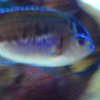-
Topics
-
Latest Update
-
1
WTS Blonde Naso Tang 5.5 - 6 inch
Kept for around 2 years. Healthy keeping and eats on dried seaweed and loves tdo pellets. Sent from my iPhone using Tapatalk -
1
-
1
WTS Blotchy Anthias 3.5-4inch
Healthy feeding on mysis, TDO pellets. Healthy keeping for around a year. Sent from my iPhone using Tapatalk -
1
-
0
Wts fishes (tangs, wrasses, clowns)
For sale fishes: (Reserved) Stripey (aiptisia buster)- $120 Bicolor cleaner wrasse (pest buster)- $15 Melanurus wrasse (pest buster)- $20 Black storm clown pair- $150 Yellow scopas tang- $150 Yellow eye white tail tang- $350 Zebra tang- $2500 Collection at kembangan. Pm to deal
-






Recommended Posts
Join the conversation
You can post now and register later. If you have an account, sign in now to post with your account.